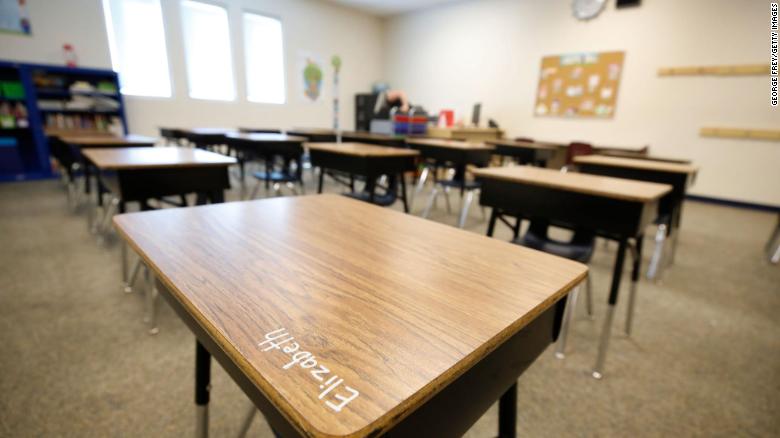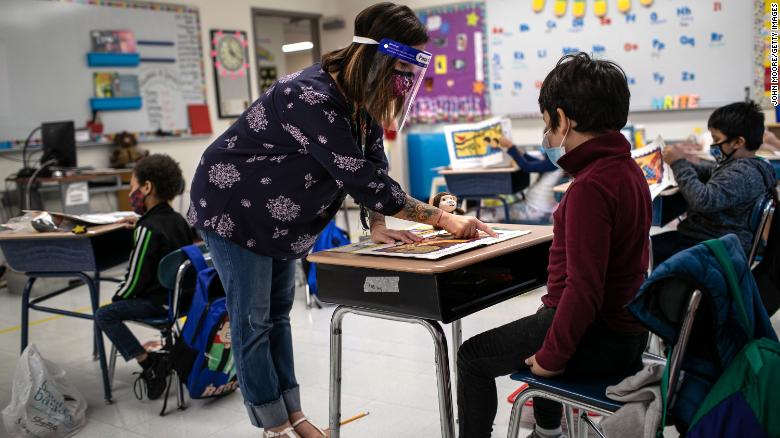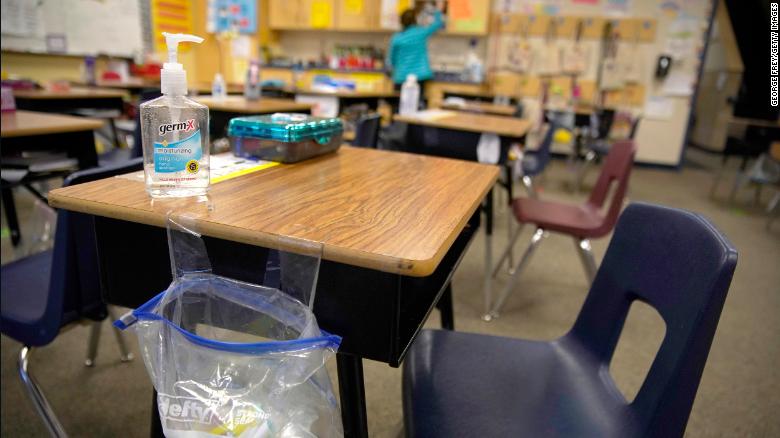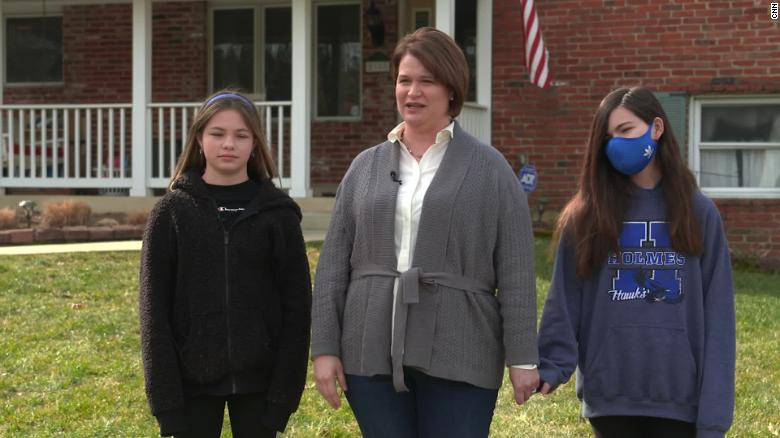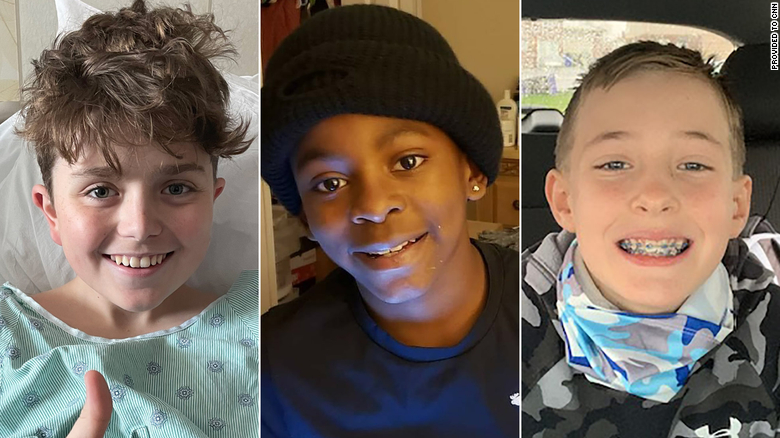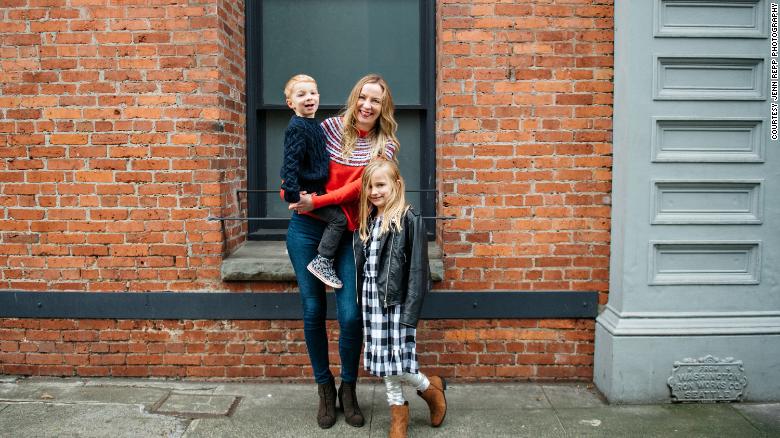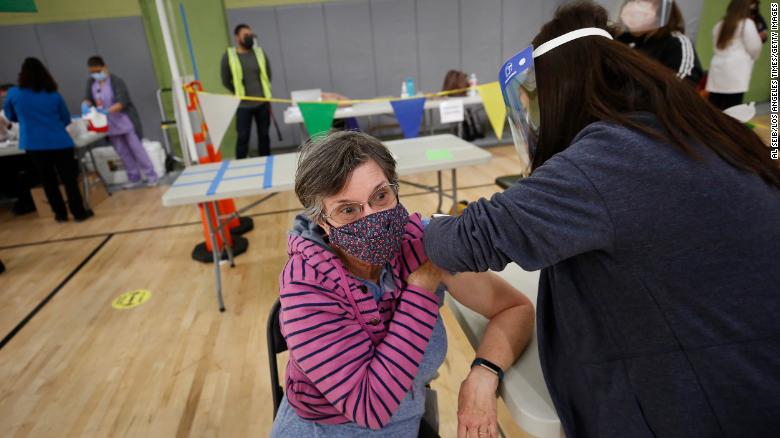(CNN)It's been one year since millions of students last stepped inside a classroom. One year since schools started shuttering to help get Covid-19 under control.
But just as the pandemic has fluctuated across the United States, so have the debates about when and how to bring students back into schools.
With
vague national guidelines about reopening classrooms, decisions have largely fallen on states and local school districts -- leading to a hodgepodge of strategies and widespread discord about what's best.
Here's a look at why some parents, students, officials and teachers are so passionate about their stances -- and what they want the other sides to know:
If schools don't open soon, this family could lose its home
When Olga Reyes' twins started remote learning a year ago, she was forced to quit her job as a nanny to stay with her own children at home.
Since then, the 10-year-olds have suffered academically and emotionally -- despite Reyes' attempts to serve as a part-time teacher and amateur IT technician when the Wi-Fi or Zoom connections go down.
"My kids are not doing well with distance learning," the San Francisco mother said. "They did have good grades in the past. But right now, they are not doing well. ... They lack the motivation to learn."
But beyond the academic stress is the family's dire financial situation. Nine months after Reyes quit her job to stay home with her kids, her husband was laid off from his construction job.
"Right now, we don't have an income." Reyes said. "We are getting food from the food bank that is being distributed weekly. And we are surviving with the last savings that we had from last year."
Reyes estimates she and her husband have one month's worth of savings left. If schools don't open soon, "we are at the risk of losing our housing."
"We don't know what's going to happen after. That's why we are asking to the district to open the schools, because we need to work," she said.
The San Francisco Unified School District said it's on track to offer in-person learning on April 12 "
at a select number of schools for our youngest students."
Reyes said she's sympathetic to those who to want to stay with remote learning, such as families that have someone with a pre-existing medical condition at home.
"The board of education and the district should give the option to the families, so the ones that want to go back to school, they can go back. And the ones that don't want to go back to school, they can just stay at home."
A hybrid model -- in which students return to classrooms only a few days a week -- is not a good option, she added.
"At this point, after a year of having the schools closed, a hybrid model could not work for my family. My kids need five days of school so they can somehow recover and catch up the academic learning that they have lost."
A teacher must teach in person where some think Covid-19 is a hoax
For five months, Kathleen Roberts has entered her workplace with trepidation.
In her rural community, many residents are Covid-19 deniers or "nonmask wearers."
"This is a heavily Trump community," said Roberts, a high school history teacher in Shenandoah County, Virginia.
"Up until the election, I can tell you that there were people saying to us when the election is over, so will be Covid. I had students, I had a janitor say it to me."
But Roberts knows too well Covid-19 is not a hoax.
"My sister-in-law, my mother-in-law and my husband all had Covid at the same time. And we lost my sister-in-law," she said. They all went to a church where worshipers often don't wear masks, and they all got sick, she said.
"When you're still combating the thought process here, it's frightening," she said. "It's sad. It's frustrating. And it takes the fun out of teaching. It really does."
Her school district moved to online teaching last March and added optional hybrid learning in the fall.
That means while Roberts is educating students online, she's also teaching students in person and struggling to get some to wear their masks correctly,
as required by the school district.
"It is a constant battle keeping kids in masks ... I would say a good 30% of students we have to stay on top of to fix their masks," she said.
Mask enforcement is especially difficult during passing periods between classes.
"For the most part, when they're right in front of you, they'll fix it. And then as soon as they walk by you, they'll push it down again."
Despite her frustration and fear of getting sick, Roberts said she understands why the decision was made to bring some students back in classrooms.
"A lot of students are better served in the classroom," she said. "Child care is a huge issue in our area, and we have a lot of single-parent homes."
There are benefits and costs to online learning, too.
"Some students have soared online -- motivated, responsible, own their education. Others struggle and have floundered. Teachers are struggling. It is difficult teaching in multiple models, online while engaging kids in class," Roberts said.
"I think some of the pros for distance learning would be a lot more technology." For example, students who previously lacked good Wi-Fi or online communications skills are now more tech-savvy.
"We actually had to work with the local cable company, and they created some towers in different places," she said. And the school district created two hot spots in some of the most remote or mountainous parts of the county.
"So they've been very proactive about that and trying to have ... equality for all students to get good technology. And every kid in the county has a Chromebook. It's a wonderful thing."
6th-grade twins disagree about whether to go back to school
In Fairfax County, Virginia, students were recently allowed to return to school two days a week in a hybrid model.
Some students, like sixth-grader Katharine Porter, chose to stick with 100% remote learning. Her mother Jennifer said she's worried about possible exposure to coronavirus.
But Katharine's twin sister Elizabeth decided to go back to school.
"I want to socialize with more people, and I made some friends on online school, and I want to meet them," Elizabeth said.
The Biden administration has announced
a goal of getting kindergarten through eighth-grade students back in classrooms five days a week by the end of the first 100 days in office.
But that's "not realistic if we're going to stay with 6-foot social distancing," Fairfax County Public Schools Superintendent Scott Brabrand said.
"Practically, that means the difference between two days a week and five days a week."
He has said it would take "five Pentagons of additional space if 6 feet is the standard" for students to be in school safely five days a week.
"And so we need clearer national discussion ... can we come in less than 6 feet?"
A teacher and mom juggles concerns
Pam Gaddy feels the strain of this debate as both a teacher and a parent.
"I've never taught in my basement," said the 24-year veteran, who teaches social studies online to students enrolled at a Baltimore high school.
"This is absolutely new to us. It's ever-evolving. Baltimore County has been full virtual since the start of school."
She knows many parents are eager to have their children return to classrooms. But Gaddy said parents need to realize that's not as easy as they might think.
"It's frustrating because people forget that teachers are parents. They have families. We're expected to negate that," she said.
While Gaddy teaches from home, she shares a workspace with her eighth-grade daughter because "she needs a little more encouragement."
"She's not far from me. So I'm listening to her classes, and I'm teaching my classes. So she's listening to my classes. And I'll say to my students, 'Give me five seconds.'"
That's when Gaddy pivots her attention to her daughter, encouraging her to respond to her teacher "because I know what it feels like when no one is talking to the teacher."
"I do want my child back in school because I know the power of the classroom," Gaddy said.
"My children actually want to go back into the building. Their dad and I are not so happy about that. But now as a parent, I have the fear of what the science says. I have the fear of what the numbers read every day. But then I also know that my children are literally suffering -- emotionally and socially -- not being in a classroom."
As a teacher, Gaddy said she would be nervous returning to a classroom if she had to do so in the near future because "not everyone is vaccinated who can be vaccinated."
"If you're really thinking about it, how are you going to bring students back into the classroom, have them move from classroom to classroom?" Gaddy wondered aloud.
"If a teacher's doing hall duty like we should be doing, you now put us less than 6 feet distance. There's no social distancing in class exchange."
Even before the pandemic, many classrooms were already full. Gaddy said one of her classes has 31 students. She said it would not be feasible to bring them all back safely in the near future.
"You're constantly trying to satisfy public outcry or federal funding, but your logistics are laughable. It's not realistic." she said.
"There are so many factors that go into it. But all people are saying is just, 'Throw them back into the building.' Well, I would love for your child to come back. I just don't want to die coming home to do it."
A superintendent isn't letting young students back, even though health officials say it's OK
After
months of devastation, Los Angeles County celebrated a milestone in mid-February: Covid-19 cases had dropped to a level that would allow elementary students to return to classrooms, health officials said.
"The state permits elementary schools to reopen as soon as we reach an adjusted case rate of 25 per 100,000," the Los Angeles County Department of Public Health said. "We are informing Los Angeles County schools ... that we expect to announce we have reached this threshold effective Tuesday, February 16."
But almost a month later, elementary students in the Los Angeles Unified School District still haven't returned to classrooms. That might not happen until mid-April, Superintendent Austin Beutner said.
"In order to complete the puzzle and bring students and staff back to school in the safest way possible, school staff need to be offered the opportunity to receive the vaccine," Beutner said on March 1.
"There are more than 86,000 people who work in traditional and charter schools in Los Angeles Unified. Our initial focus will be to vaccinate school staff who are currently working at school sites and all who are involved in preschool and elementary school. This vaccination effort will allow us to reopen these schools by the middle of April."
Some teachers' unions, including United Teachers Los Angeles, have balked at resuming classes
until teachers can be vaccinated.
California's governor has announced 10% of Covid-19 vaccine doses
would be set aside for teachers and childcare workers in an effort to resume in-person learning.
This mom quit her job to stay home but still wants remote learning
Hannah Blackbourn had just started a new job as vice president of advertising sales when Seattle Public Schools moved to at-home learning last March.
She and her husband "frantically" explored the idea of hiring someone to stay with their children, now 7 and 3.
"But at the time ... that freaked us out, thinking about inviting somebody into our home. We couldn't control where they were when they weren't in our home," Blackbourn said.
"It was a very tough decision, but I made the decision to leave that job. We didn't really have a way for family to help, because our older family members that are nearby -- we've been very scared over the past year of accidentally somehow passing them coronavirus because our son has continued to be in preschool."
Blackbourn decided to quit her new job because it seemed less stable than her husband's job, she said.
And even though Seattle parents have been asked whether they would prefer a hybrid model, "I wanted to stick with remaining remote for safety and consistency," she said.
"But I would also say we've been super privileged to be in this situation, where I was able to step back from work for a while." She said not all families have been so lucky.
Blackbourn also discovered an unexpected benefit with remote learning: Young children are no longer distracted by bullying at school.
She said her daughter experienced bullying last year, and now "all of that stress is gone."
"This doesn't mean I want her to be totally isolated from other kids forever," Blackbourn said. "But she's also not around anybody saying mean things to her or shoving her or any of those horrible interactions that can happen between kids on the playground."
While Blackbourn worries about how a year off from work might set back her career, she'd still rather stay home with her first-grade daughter than have her participate in hybrid learning just a few days a week.
"That doesn't seem good for anybody because No. 1, of course, I don't want anybody to get sick. And I do think teachers are right to demand things like vaccinations and PPE," Blackbourn said.
On top of that, "there wouldn't be the benefit that I would be able to return to the workforce," she said. "I would still be stuck in this spot where I'm juggling and facilitating (remote learning)."

